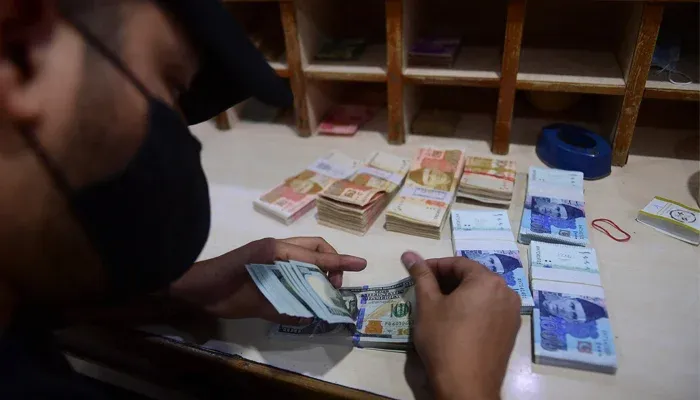Friday, October 20, 2023
Market sources say there is no shortage of dollars due to good cash inflows.
Commercial banks operating as a cartel reveal sources of information.
Let's say banks raise the interbank dollar rate to maximize profits.
ISLAMABAD: The recent two-day fall in the rupee against the dollar, which has now reversed, was allegedly due to manipulation by some banks, The News reported on Friday.
On Thursday, the rupee reversed course against the dollar and strengthened in the interbank and open markets at the same time with clear margins, but there was no apparent change in the fundamentals of market forces.
The reversal shows that the decline in the value of the rupee was due to the leniency of some commercial banks who were instrumental in manipulating the currency market to maximize their benefits and profit.
In the past, the banking sector's profits have soared without any repercussions or been burdened with an unexpected profit tax after they managed to thwart all such attempts by the authorities.
However, intelligence sources told The News that the commercial banks along with other stakeholders were operating as a cartel. They added that banks are raising the interbank dollar rate to maximize their profits on the lined letters of credit (LC) of importers and are deliberately delaying LCs to create an artificial dollar shortage in the market and push the interbank dollar rate to Rs282.
Following the tone of importers and other stakeholders, banks blamed the government's upcoming installment payment to the International Monetary Fund (IMF) in November for the rise in the dollar.
But market sources told The News that there is no dearth of dollars in the market as money changers are getting good inflow.
Banks therefore accumulated the USD at 276/277 and then raised the interbank rate to over 280 to profit. Market participants say banks typically resort to these kinds of tactics to offset losses incurred as a result of the continued depreciation of the dollar.
Chairman of the Stock Exchange Association of Pakistan (ECAP) Malik Bostan, when questioned on the issue, blamed manipulation where efforts were made to convert all gains into losses by creating a new wave of rupee weakness against the dollar and was carried to higher quarters.
Bostan said the rupee recovered on Thursday and hoped the trend would continue in the coming days.
Zafar Paracha, secretary general of ECAP, agreed with Bostan's assessment of the alleged manipulation by the banks. He added that due measures taken by the relevant authorities have led to an improvement in the rupee-dollar parity in both the interbank and open markets.
Meanwhile, independent economists say the government has taken administrative steps in the right direction, which have yielded positive results. But they warned that the sustainability of these gains depends on the ability of economic managers to generate dollar inflows to get Pakistan out of its dollar liquidity crisis.
According to them, Pakistan would have to repay around $790 million as debt service on foreign loans, including principal repayments and surcharges. Of this, the government has paid off the interest from euro bonds in recent weeks.
Now the government is also required to repay $187 million in principal and mark-up in the current month, so the inflow of dollars needs to be improved to stabilize the currency market permanently.










